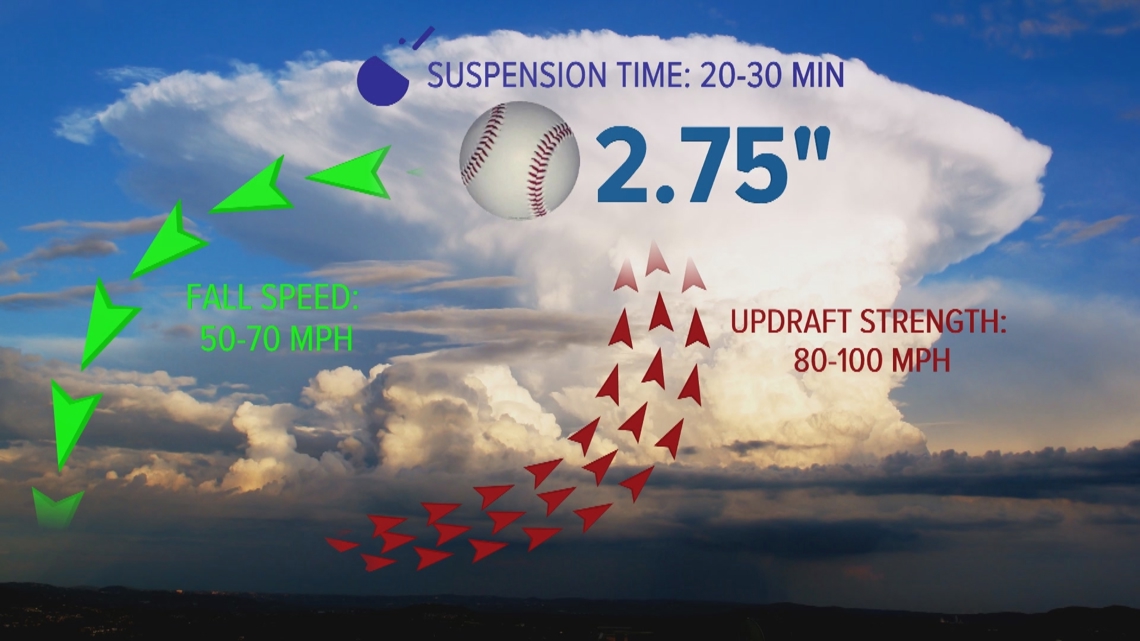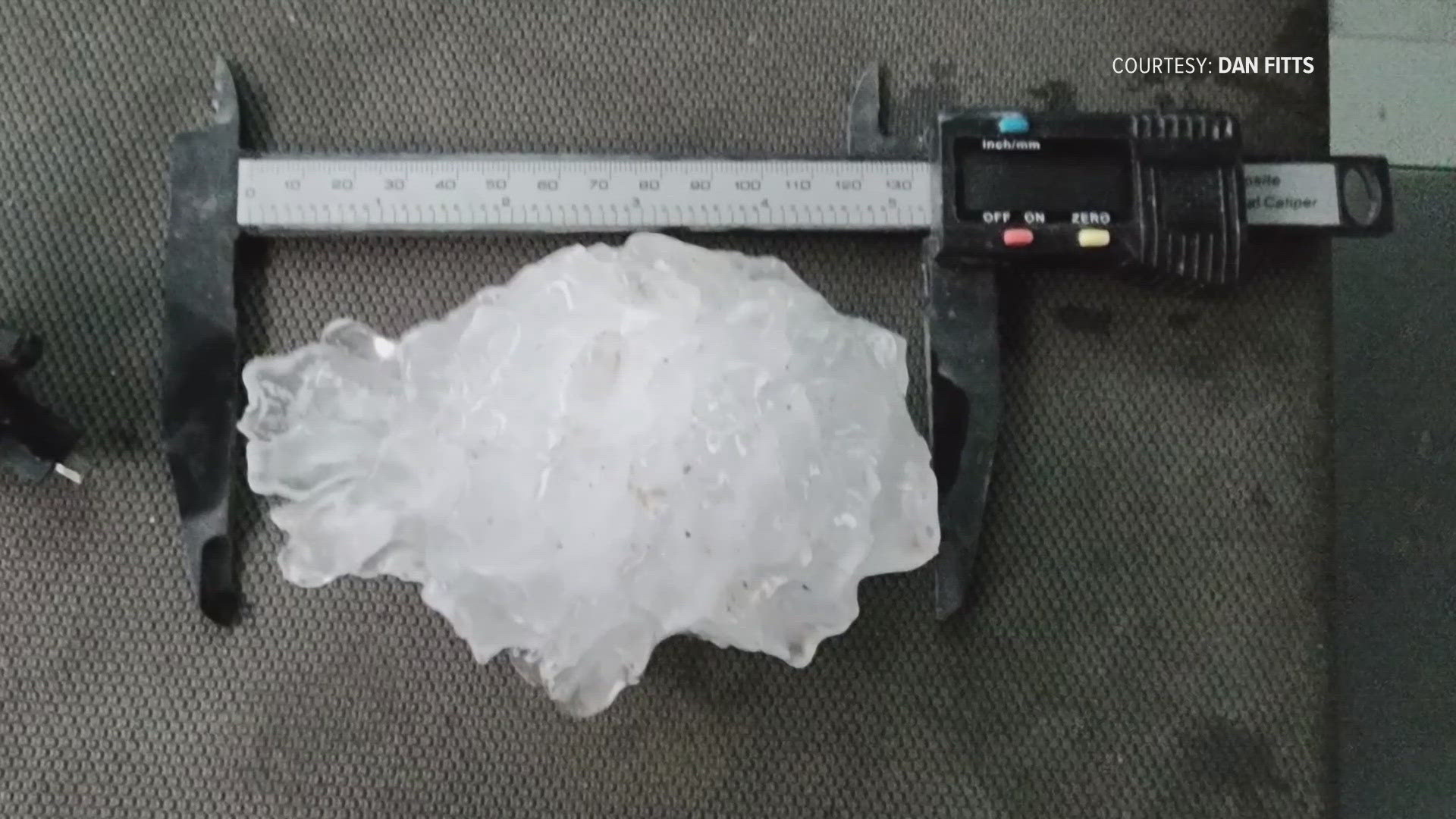DENVER — Colorado has already taken a beating from large hail this thunderstorm season. Baseball-size hail hit twice -- first in Yuma County on May 20, and then again in the Denver metro area on May 30.
It takes a very powerful storm to create hail baseball size or bigger. Here’s how it works:


Air getting sucked up into the storm pushes water droplets up where it's freezing cold, and hail starts to form.
That rising air, known as the updraft, suspends the hail at the top of the thunderstorm. The longer the hail is suspended, the bigger it gets.
To create a baseball-size hailstone, which is 2.75 inches, the updraft would need to be 80 to 100 mph and the hailstone would need to be suspended for about 20 to 30 minutes.
The hailstone falls from the cloud when its mass is greater than the force of the updraft. Baseball-size hail falls to the ground at 50 to 70 mph.


Thunderstorms that powerful are not too common in Colorado, but we do get a least a few of them every year. And the updrafts tend to get stronger as the summer heat builds.
The two biggest hailstones ever found in Colorado both fell in the month of August. A 4.83-inch piece of hail fell in Kit Carson County in 2019 and a record 5.25-inch hailstone fell in Yuma County in 2023.
SUGGESTED VIDEOS: Severe Weather
> Watch 9NEWS original shows, live Colorado news and weather updates, daily forecasts, and sports coverage for free on the 9NEWS+ app on Roku and Fire TV.

